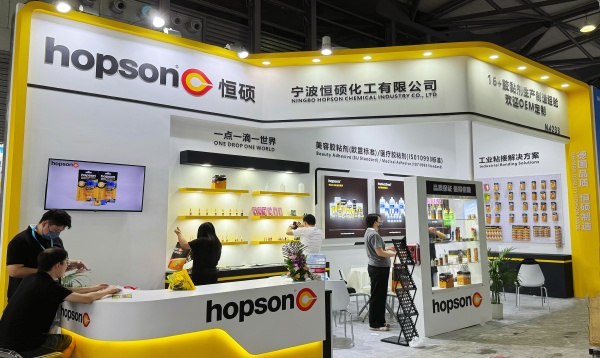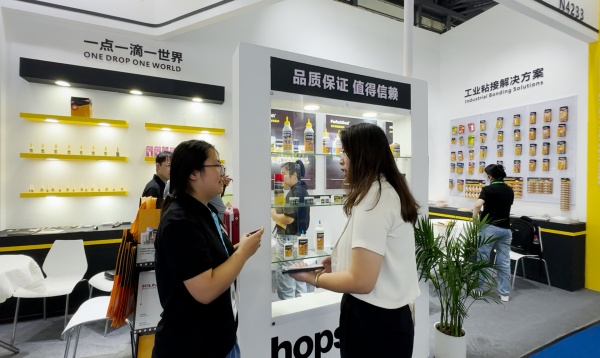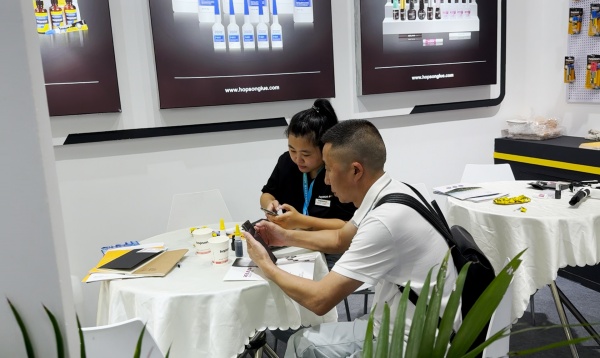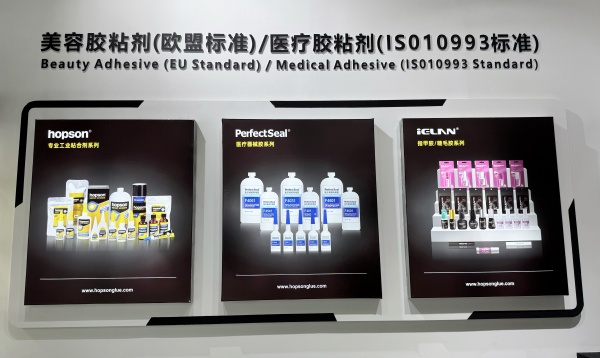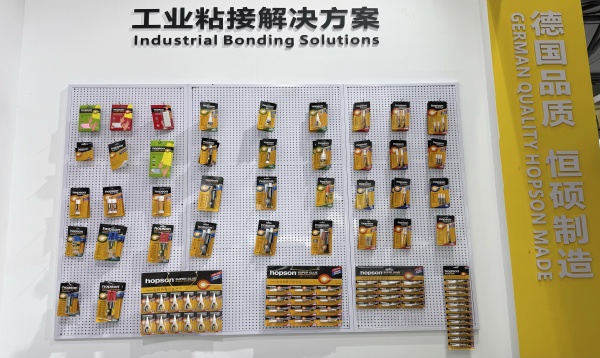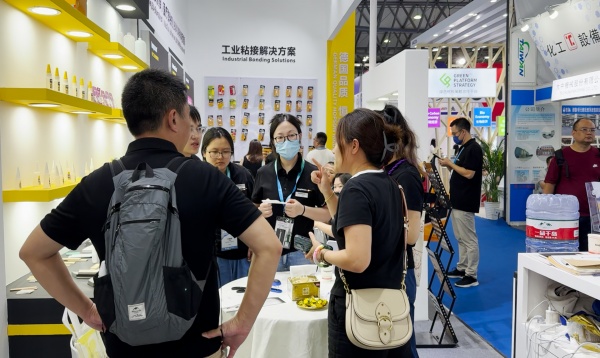What is adhesive?
Adhesive, also known as glue, cement, mucilage, or paste, is any non-metallic substance applied to one or both surfaces of two separate items that binds them together and resists their separation.
What are the types of adhesives?
- Wet Adhesives
- Contact Adhesives
- Reactive Adhesives
- Single-Component
- Reactive Adhesives
- Two-Component Reactive Adhesives
- Hot-Melt Adhesives
- Pressure-Sensitive Adhesives
There are many types of adhesives. According to different standards, the classification of adhesives is as follows:
What are adhesives made of?
The components of the adhesive include base material, curing agent, solvent, plasticizer, filler, coupling agent, crosslinking agent, accelerator, toughening agent, tackifier, thickener, diluent, antioxidant, polymerization inhibitor Agents, flame retardants, initiators, photosensitizers, defoamers, preservatives, stabilizers, complexing agents, emulsifiers. Types of base material: base material is the main component, main agent, or main polymer of the adhesive, which has a bonding effect.
- According to the different chemical compositions, the source of the base material is an inorganic compound and an organic compound. Organic compounds are polymer-based materials for polymer synthesis.
Commonly used organic compounds: thermosetting synthetic resins: phenolic resin, epoxy resin, amino resin, polyurethane resin, unsaturated polyester, and acrylic resin. - Thermoplastic synthetic resin: rubber base material, natural polymer material, water-based latex, base material.
- Rubber base adhesive.
The selection principle of the adhesive base material: according to the object of the adhesive application, the application occasion, and the performance of the application. At the same time, the molecular structure of the molecular base material is closely related to the bonding performance.
- The polarity of polymer materials is related
- Crystallization performance of polymer materials
- Molecular weight of polymer materials
The curing agent (hardener) initiates a chemical reaction that causes the ground state raw material to polymerize, polycondense, or cross-link, transforming it into a linear or network polymer. This substance imparts mechanical strength and stability to the adhesive joint, ensuring its durability and effectiveness.
Choice of curing agent:
- It is best to be a liquid, non-toxic, colorless, and odorless substance
- The curing agent and the cured object should react smoothly, with less heat release, to reduce the cohesion of the adhesive layer
- Heat resistance, choose a curing agent with more reactive groups in the molecule
- Toughness, choose a curing agent with a longer molecular chain
Adhesive solvent: refers to the liquid that can reduce the intermolecular force of certain solids or liquids, and disperse the dissolved substances into a homogeneous system of molecules or ions. Commonly used solvents are liquid substances with low viscosity.
There are mainly aliphatic hydrocarbons, aromatic hydrocarbons, halogenated hydrocarbons, esters, alcohols, ketones, acids, ethers, terpene olefins, amides, and water. However, most organic solvents have certain toxicity, flammability, explosiveness, pollution to the environment, hidden dangers to safety, and harm to the human body.
The role of solvent:
- The medium of the polymerization reaction: the reaction is gentle and the temperature is easy to control.
- Dissolving base material: preparing solvent-based adhesives.
- Thinner: dilute the adhesive to make it reach a certain viscosity, which is good for wetting and easy to coat.
- Adjust the volatilization speed of the adhesive.
- Prevent gelation and increase storage stability.
- Surface cleaning agent before bonding.
- Direct bonding, some plastics.
- Reduce costs and improve efficiency.
Choice of adhesive solvent:
- Polarity: Choose a solvent with the same or similar polarity as the base material (the principle of similar compatibility).
- Solubility parameter (related to polarity): the solubility parameter of the solvent is similar to that of the polymer matrix.
- Solvent volatility: Choose a solvent with appropriate volatility or a mixed solvent of fast and slow.
- Solvent volatilizes too fast: the surface of the glue is easy to form a film, and the solvent under the film is not easy to volatilize;
- Solvent volatilization is too slow: the surface drying time is slow, which affects work efficiency.
4. The choice of solvent should consider price, toxicity and source
The role of softener: it is a component that is not cost-effective for SBS. Its role is to adjust hardness, fluidity, and reduce costs. Oil-extended SBS can make compounding and processing easier.
The most commonly used is naphthenic oil. Aromatics have deep color, are toxic, and cannot be used. Paraffin oil cannot improve physical properties and can also cause ejection. The domestic Karamay KN series of environmentally friendly naphthenic oils (such as KN4010, etc.) are of high quality.
Types of softeners: According to the hydrocarbon composition, it can be divided into three types: paraffin-based, cycloalkyl, and aromatic
Features of softener:
- Paraffin-based rubber oil: good oxidation resistance and light stability, but relatively poor emulsification, compatibility, and low temperature properties.
- Naphthenic rubber oil: has the advantages of both paraffin and aromatic bases, moderate emulsification and compatibility, non-polluting, non-toxic, and a wide range of applications.
- Aromatic rubber oil: good compatibility, large filling volume, low price, and high strength of the rubber product obtained. But the color is deep, toxic, and pollutes the environment.
Definition of plasticizer: It is a substance that reduces the glass transition temperature and melting temperature of polymer compounds, improves the brittleness of the adhesive layer, and enhances melt fluidity.
The role of plasticizer:
- Disperse the active groups of polymer compounds, and weaken the intermolecular force, thereby reducing the interaction between molecules.
- Increase the heat, elongation, and cold resistance of the polymer compound, reduce its cohesive strength, elastic modulus, and heat resistance.
Choice of plasticizer:
- Polarity: The polarity affects the compatibility of the plasticizer and the main material, and the principle is the same as that of the solvent.
- Persistence: The physical and mechanical properties of the glue are affected by the loss of exudation, migration, and volatilization. Choose high-boiling or high-molecular-weight plasticizers.
- Molecular weight and state: the higher the molecular weight, the better the bonding strength.
Commonly used plasticizers: phthalates, phosphates, adipates and sebacates, etc.
Definition of filler: A solid material that does not react chemically with the matrix in the adhesive, but can change its properties and reduce costs.
Commonly used fillers are divided into organic fillers and inorganic fillers: organic fillers-improve the brittleness of the resin, high moisture absorption, and low heat resistance;
Inorganic fillers-increase the relative density and brittleness of the glue, but the heat resistance, media properties, shrinkage rate, etc. will be improved.
The choice of filler:
- Inactive and does not react with other components of the adhesive.
- Good dispersibility and good wettability of base material.
- Does not contain moisture, harmful substances, grease, and non-hygroscopic.
- Uniform particles, non-toxic.
- Wide range of sources, convenient processing, and low price.
- The density of the filler and the density of the base material should not be too different.
- Appropriate dosage.
Commonly used fillers: silica, calcium carbonate, magnesium carbonate, aluminum powder, phenolic resin, etc.
Coupling agent: a compound that can simultaneously produce a certain binding force with polar and non-polar substances, and is characterized by substances that have both polar and non-polar parts in the molecule.
Commonly used coupling agents are organic chromium coupling agents, organic silicon coupling agents, and titanate coupling agents. Silane coupling agents are commonly used in adhesives.
The role of the coupling agent:
- Increase the intermolecular force of the main resin itself and improve the cohesive strength of the adhesive.
- Increase the bond between the resin and the adherend, and play a certain role in bridging. Different coupling agents have different reactive groups, and different reactive groups have different effects on bonding performance.
Initiator: A substance that can decompose to produce free radicals under certain conditions. Generally, an initiator is added to compounds containing unsaturated bonds. Commonly used initiators include dibenzoyl peroxide, cyclohexanone peroxide, isopropyl peroxide Benzene, azobisisobutyl cyanide, etc
Promoter (catalyst): a substance that can reduce the decomposition temperature of the initiator or accelerate the reaction between the curing agent and the resin rubber.
Anti-aging agent: A substance that can delay the aging of polymer compounds. For the adhesive used under high temperatures and exposure to the sun, it is easy to age and deteriorate, so an anti-aging agent is added when preparing the glue.
Thickener: an adhesive with low viscosity, a substance that increases its viscosity
Polymerization inhibitors and stabilizers: substances that prevent or delay the self-crosslinking of polymers and monomers containing unsaturated bonds (hydroquinone) during storage.
How to use adhesives?
As there are many types of adhesives and adhesins, the bonding methods used are not the same.
Summarized as:
- Preparation of adhesive
- Surface treatment of adherend
- Gluing
- Leave it in the air to make the solvent and other low-molecular substances volatilize the gel
- Overlap pressurization
- Remove the adhesive remaining on the surface of the product
Note when using adhesive:
- For AB adhesives, when proportioning, please proportion according to the requirements of the instructions. Choosing Hopson AB glue has a 1:1 ratio. Use directly.
- For AB adhesives, stir well before use. Do not leave dead corners, otherwise, it will not solidify.
- The adherend must be cleaned without moisture (except for underwater curing glue).
- To achieve high bonding strength, the adherend should be polished as much as possible.
- If you want high strength and fast curing, you can heat it according to the situation; when applying glue, it should not be too thick, generally, 0.5mm is better, the thicker the bonding effect, the worse.
- When bonding objects, it is best to apply pressure or fix them with clamps.
- To make the strength higher, it is best to allow the bond to cure for 24 hours after application.

